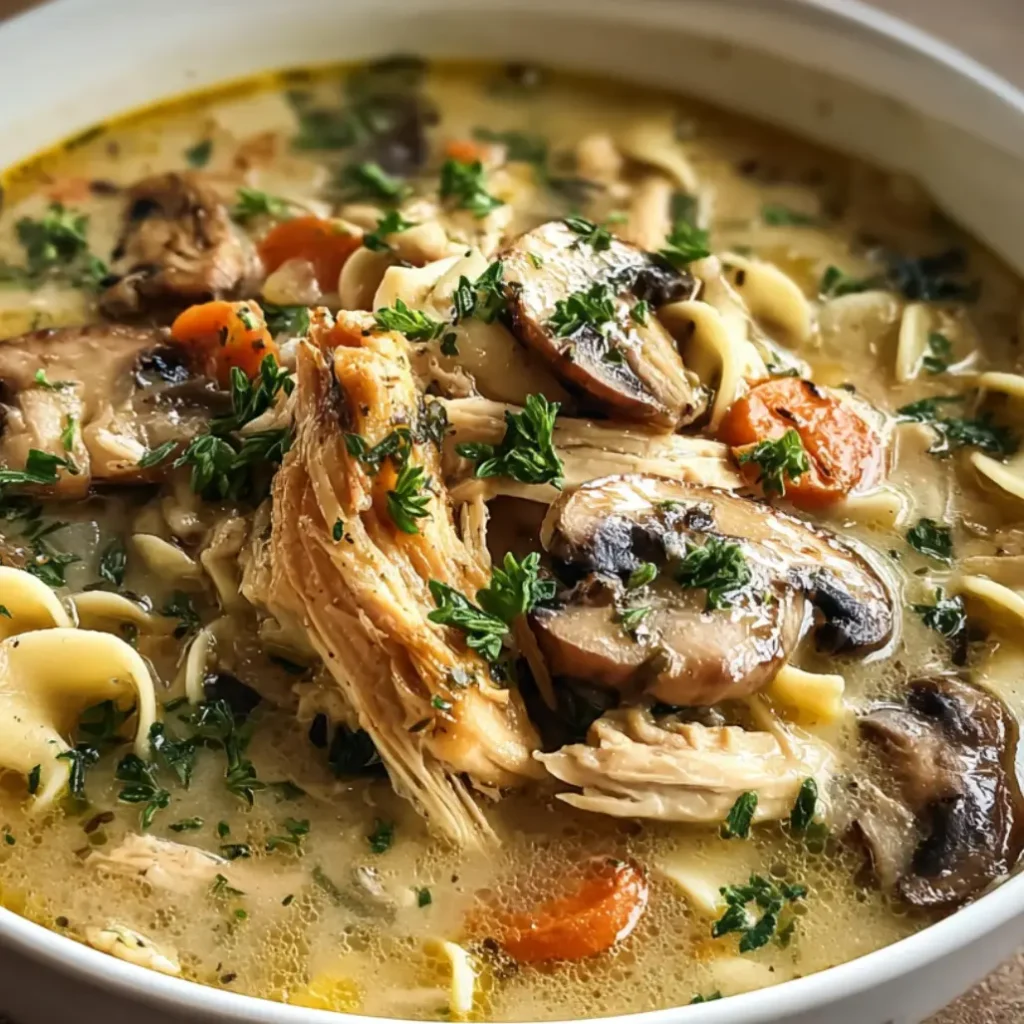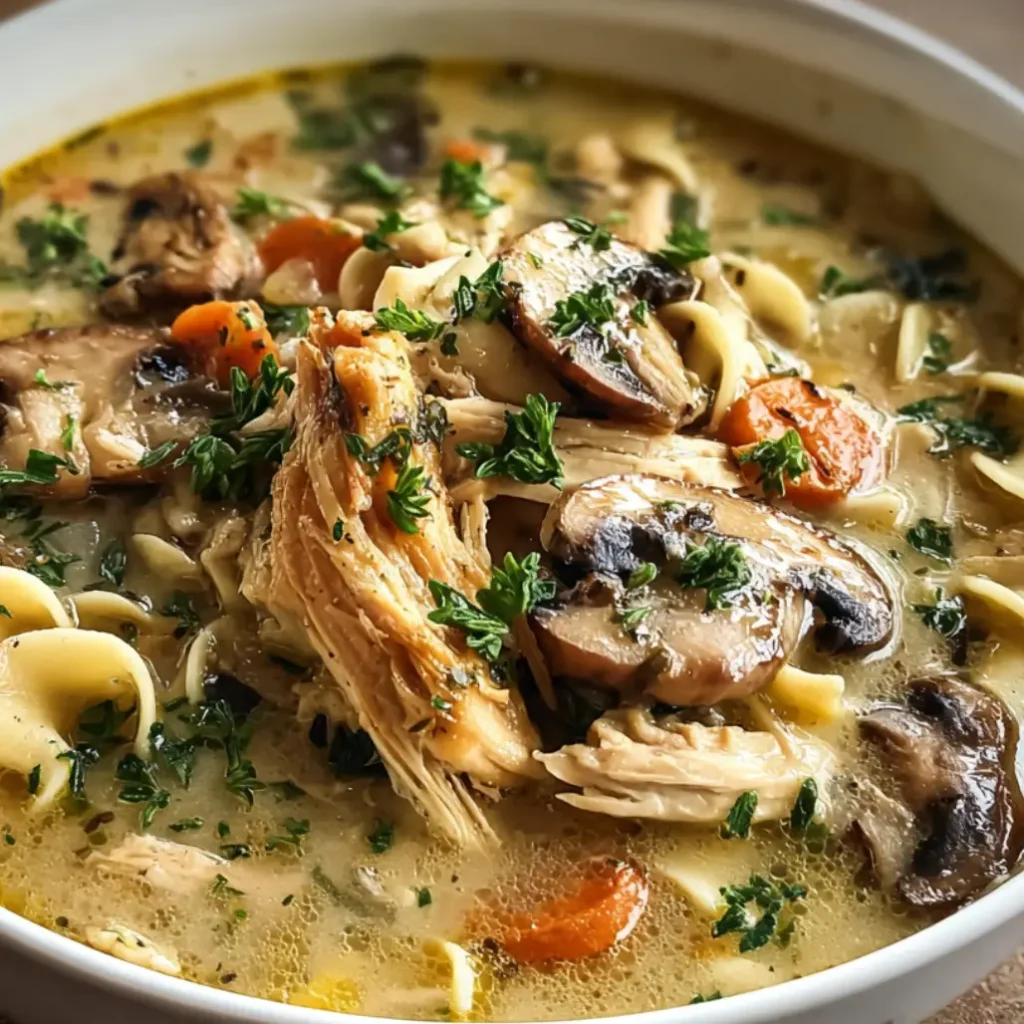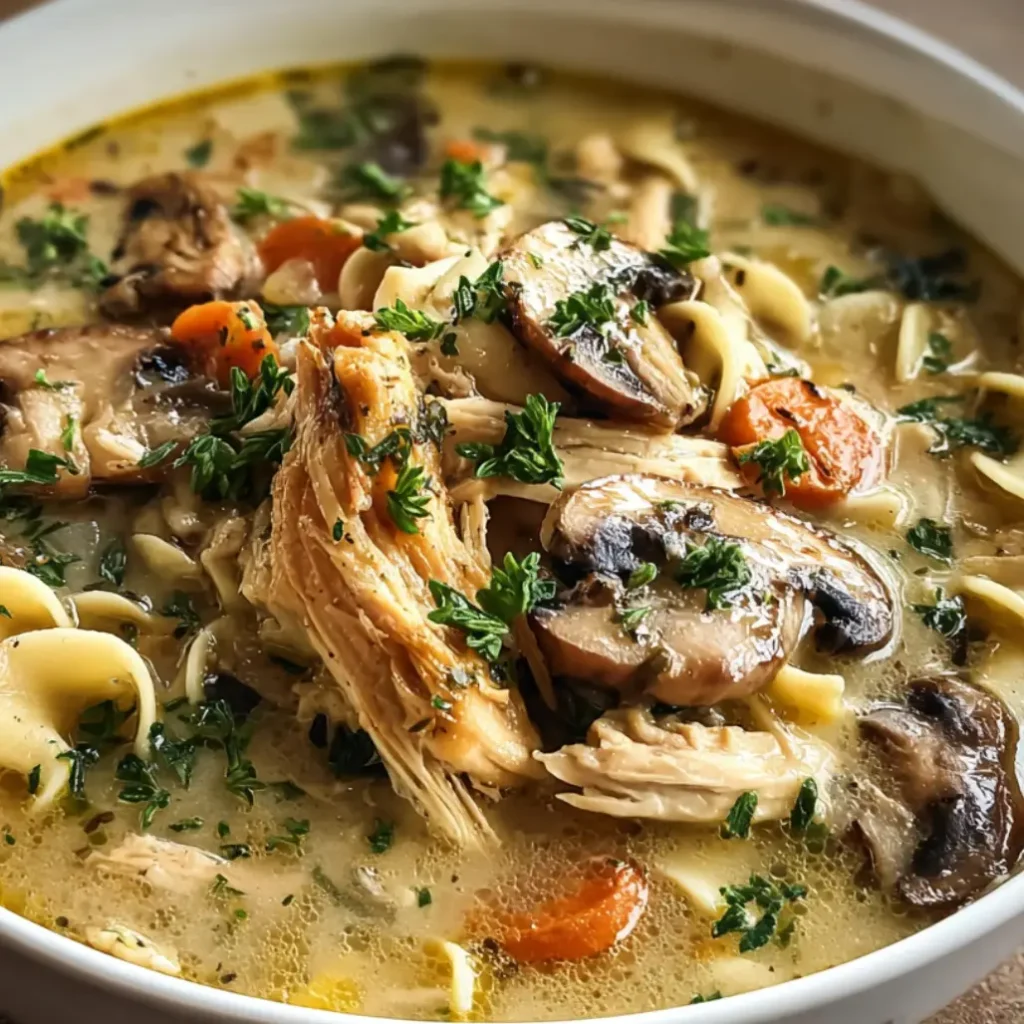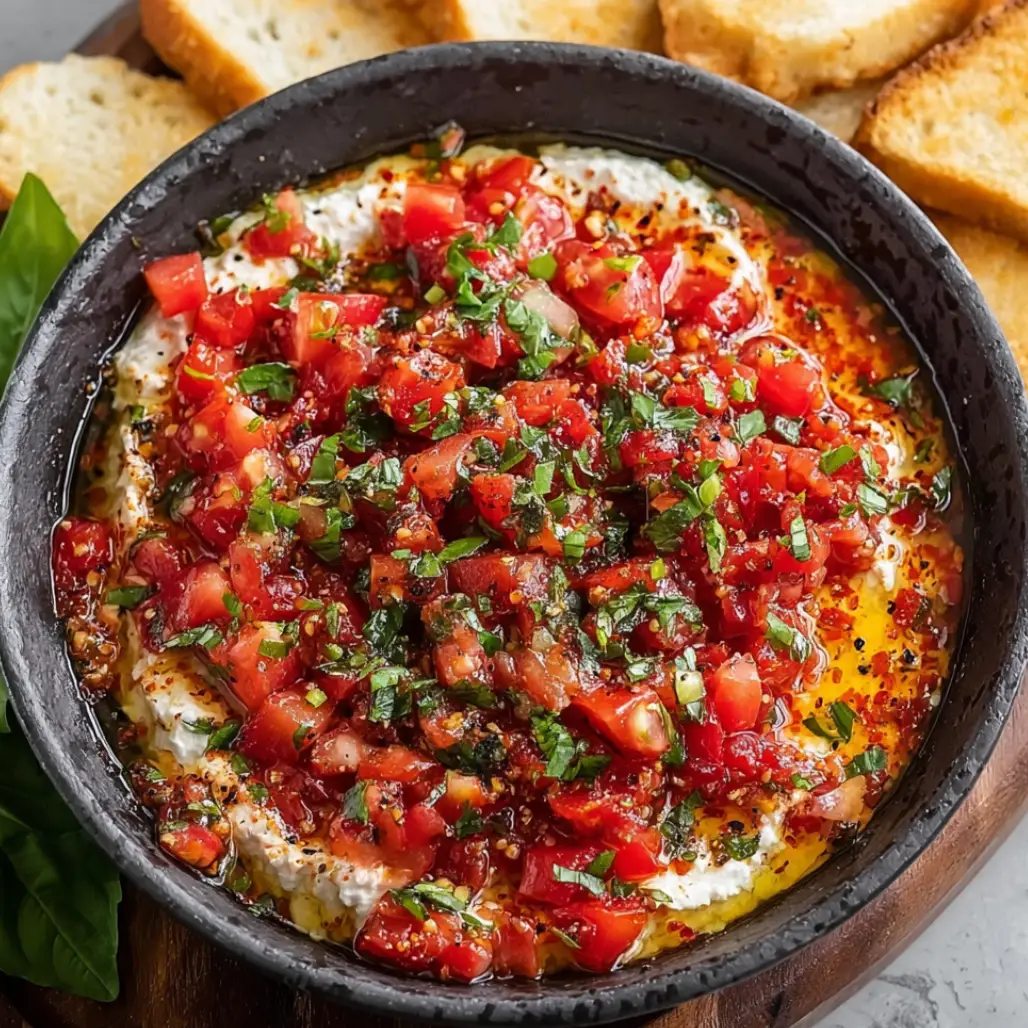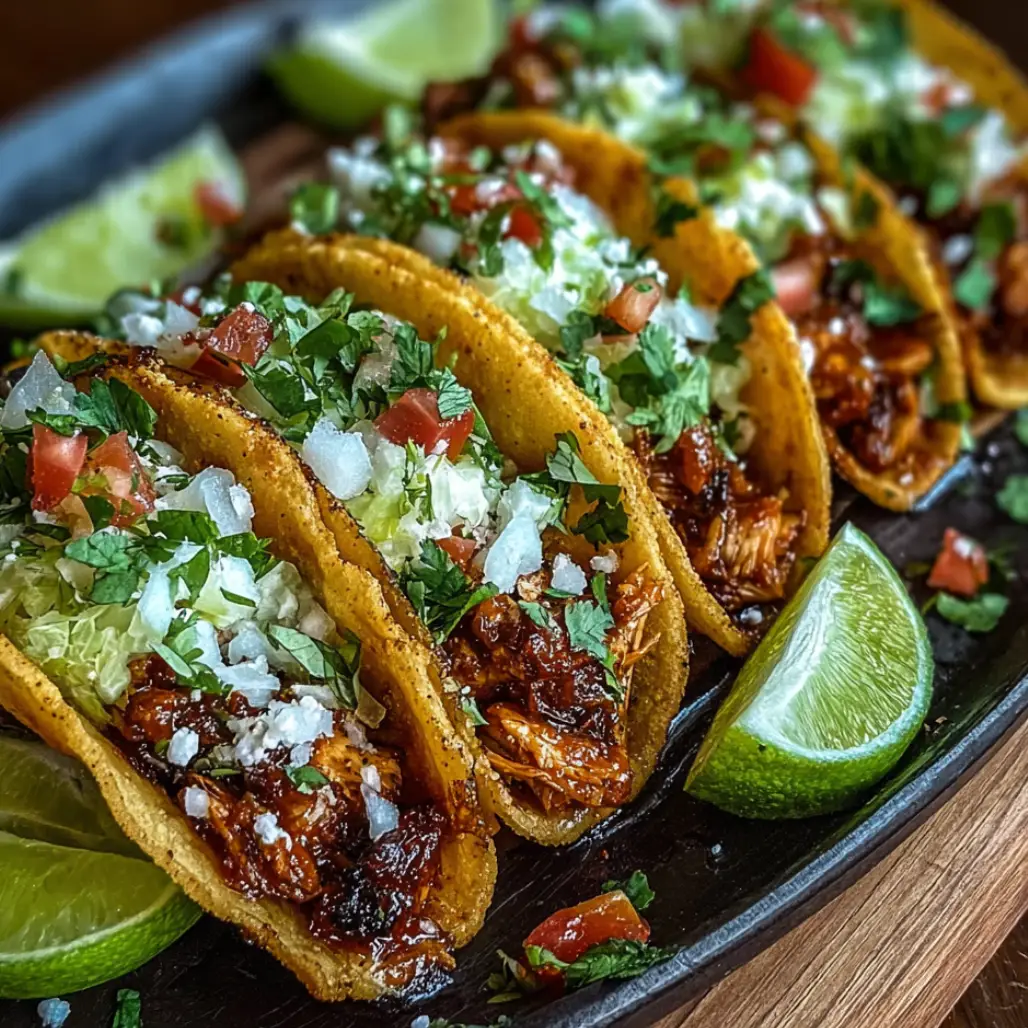| Prep Time: 15 minutes | Cook Time: 25 minutes | Total Time: 40 minutes | Serves: 6 |
|---|
Transform your weeknight dinner routine with this luxurious rotisserie chicken mushroom soup that combines tender shredded chicken with earthy mushrooms in a velvety cream base. This comforting bowl of goodness delivers restaurant-quality flavors while utilizing the convenience of store-bought rotisserie chicken, making it an ideal solution for busy families seeking nourishing meals without extensive preparation time. The symphony of fresh thyme, aromatic garlic, and rich cream creates an unforgettable culinary experience that will quickly become your go-to comfort food recipe.
Why Rotisserie Chicken Mushroom Soup is Your Perfect Weeknight Solution
Rotisserie chicken mushroom soup stands as the ultimate testament to smart cooking because it maximizes flavor while minimizing effort through the strategic use of pre-cooked ingredients. The beauty of this recipe lies in its ability to transform simple pantry staples into an extraordinary meal because rotisserie chicken brings depth and seasoning that would typically require hours of slow cooking. Additionally, this soup offers remarkable versatility because you can easily customize it with seasonal vegetables, different mushroom varieties, or various herbs to suit your family’s preferences.
The convenience factor cannot be overstated because rotisserie chicken eliminates the need for lengthy protein preparation, allowing you to focus on building layers of flavor through proper sautéing techniques and seasoning. Furthermore, this rotisserie chicken mushroom soup freezes exceptionally well because the cream base maintains its texture when properly stored, making it an excellent make-ahead option for meal planning. The nutritional profile impresses because mushrooms provide essential vitamins and minerals while the chicken delivers high-quality protein, creating a well-balanced meal that satisfies both hunger and nutritional needs.
Essential Ingredients for Perfect Rotisserie Chicken Mushroom Soup
For the Soup Base:
- 1 whole rotisserie chicken, skin removed and meat shredded (approximately 4 cups of meat)
- 1 large yellow onion, finely diced
- 3 celery stalks, finely chopped
- 1 pound mixed mushrooms, sliced (cremini, button, and shiitake work beautifully)
- 4 cloves fresh garlic, minced
- 2 tablespoons fresh thyme leaves (or 1 tablespoon dried)
- 6 cups high-quality chicken broth
- 1 cup heavy cream
- 3 cups fresh spinach, roughly chopped
For Seasoning and Finishing:
- 2 tablespoons olive oil
- 2 tablespoons unsalted butter
- 1 teaspoon kosher salt (adjust to taste)
- 1/2 teaspoon freshly ground black pepper
- 1/4 teaspoon red pepper flakes (optional)
- 2 tablespoons fresh lemon juice
- 2 tablespoons fresh parsley, chopped (for garnish)
The Art of Creating the Perfect Rotisserie Chicken Mushroom Soup
Creating exceptional rotisserie chicken mushroom soup requires understanding the fundamental principles of layered flavor development because each ingredient contributes specific elements that build upon one another to create complexity. The process begins with properly preparing your mise en place because having all ingredients prepped and ready ensures smooth cooking without rushing or burning delicate components. Temperature control plays a crucial role because mushrooms release moisture that must be properly evaporated to concentrate their earthy flavors before adding liquid components.
The cream integration technique determines the final texture because adding cream too early or at too high a temperature can cause separation, while proper timing creates a silky, luxurious consistency. Understanding the balance between acidity and richness becomes essential because the final lemon juice addition brightens the entire soup and prevents the cream from becoming overly heavy. Professional timing ensures that delicate ingredients like spinach maintain their vibrant color and tender texture because overcooking leafy greens results in an unappealing muddy appearance and bitter flavors.
Step-by-Step Instructions for Rotisserie Chicken Mushroom Soup
Step 1: Prepare Your Ingredients and Equipment
Begin by gathering all ingredients and ensuring your rotisserie chicken is completely cooled before shredding, because warm chicken will create steam that affects the cooking process. Remove all skin and bones from the rotisserie chicken, then shred the meat into bite-sized pieces using two forks or clean hands, making sure to check for any remaining cartilage or small bones. Heat your olive oil and butter in a large, heavy-bottomed Dutch oven or soup pot over medium heat because the combination provides both flavor and proper fat content for sautéing.
Professional Tip: Save the rotisserie chicken bones and skin in a freezer bag for making homemade stock later, because these remnants contain incredible flavor compounds that enhance future soup preparations.
Key Points: Proper mise en place prevents rushed cooking, room-temperature ingredients cook more evenly, and quality equipment ensures consistent heat distribution throughout the cooking process.
Step 2: Build the Aromatic Foundation
Add the diced onion and chopped celery to the heated oil and butter mixture, cooking for 5-7 minutes until the vegetables become translucent and slightly softened, because this foundation creates the flavor base for your entire rotisserie chicken mushroom soup. Stir occasionally to prevent browning while allowing the vegetables to release their natural moisture and concentrate their flavors through proper caramelization. The vegetables should appear glossy and fragrant when ready, indicating that their cellular structure has broken down sufficiently to release maximum flavor.
Professional Tip: Season the vegetables lightly with salt during this step because salt draws out moisture and accelerates the softening process while building layers of seasoning throughout the soup.
Key Points: Proper vegetable preparation creates depth, even cooking prevents burning, and gradual moisture release concentrates flavors effectively.
Step 3: Develop the Mushroom Flavor Profile
Increase heat to medium-high and add the sliced mushrooms to the pot, stirring frequently for 8-10 minutes until they release their moisture and develop a beautiful golden-brown color, because properly cooked mushrooms provide the earthy backbone of this rotisserie chicken mushroom soup. The mushrooms will initially release significant moisture, which must be cooked off completely before proceeding to prevent a watery final product. Continue cooking until the mushrooms appear caramelized and the pan sounds dry when stirring, indicating that the water has evaporated and flavor concentration has occurred.
Professional Tip: Avoid overcrowding the mushrooms by cooking in batches if necessary, because overcrowded mushrooms steam rather than brown, resulting in bland, rubbery texture instead of rich, caramelized flavor.
Key Points: High heat promotes browning, moisture evaporation concentrates umami flavors, and proper timing ensures optimal texture development.
Step 4: Incorporate Aromatics and Seasonings
Reduce heat to medium-low and add the minced garlic, fresh thyme, and red pepper flakes, stirring constantly for 30-60 seconds until fragrant but not browned, because garlic burns quickly and bitter flavors would compromise your rotisserie chicken mushroom soup. The herbs should release their essential oils immediately, creating an aromatic cloud that signals proper activation of their flavor compounds. This brief cooking time allows the aromatics to bloom without becoming harsh or overpowering the delicate balance of the finished soup.
Professional Tip: Keep the aromatics moving in the pan because garlic can go from perfectly fragrant to burnt and bitter in mere seconds, which would require starting over with fresh ingredients.
Key Points: Low heat prevents burning, constant stirring ensures even cooking, and proper timing maximizes aromatic impact without bitterness.
Step 5: Add Liquid Components and Simmer
Pour in the chicken broth slowly while stirring to deglaze any browned bits from the bottom of the pot, because these caramelized pieces add tremendous depth to your rotisserie chicken mushroom soup. Bring the mixture to a gentle simmer over medium heat, then reduce to low and maintain a steady, gentle bubble pattern for 10 minutes, allowing the flavors to meld and the broth to absorb the vegetable and mushroom essences. Avoid rapid boiling because aggressive heat can cause the vegetables to break down too much and create a cloudy appearance.
Professional Tip: Taste the broth at this stage and adjust seasoning before adding the chicken and cream, because it’s easier to balance flavors in the base rather than trying to correct them later.
Key Points: Deglazing captures concentrated flavors, gentle simmering prevents ingredient breakdown, and gradual heating allows proper flavor integration.
Step 6: Incorporate Chicken and Final Elements
Add the shredded rotisserie chicken to the simmering broth and cook for 5 minutes to heat through and allow the chicken to absorb some of the surrounding flavors, because pre-cooked chicken only needs warming rather than extended cooking. Reduce heat to low and slowly stir in the heavy cream, maintaining the lowest possible heat to prevent curdling, because cream-based soups require gentle treatment to maintain their smooth texture. Add the fresh spinach during the final 2 minutes of cooking, stirring just until wilted, because leafy greens overcook quickly and become unpalatable when exposed to prolonged heat.
Professional Tip: If the soup appears too thin, create a slurry with 2 tablespoons cornstarch mixed with equal amounts cold cream, then whisk into the soup and simmer for 3-4 minutes to thicken naturally.
Key Points: Gentle heating prevents cream separation, brief spinach cooking preserves color and nutrition, and proper timing ensures optimal texture throughout.
Step 7: Season and Finish the Soup
Remove the pot from heat and stir in the fresh lemon juice, kosher salt, and black pepper, tasting and adjusting seasonings as needed because the final seasoning determines the overall success of your rotisserie chicken mushroom soup. The lemon juice brightens the rich cream base and balances the earthy mushroom flavors, while proper salt levels enhance all the other ingredients without overpowering them. Garnish each serving with fresh chopped parsley and an additional crack of black pepper for visual appeal and fresh herb brightness.
Professional Tip: Always add acid last because lemon juice can cause cream to curdle if added while the soup is still hot, and salt levels should be adjusted gradually because you can always add more but cannot remove excess.
Key Points: Off-heat finishing prevents curdling, acid balances richness, and fresh garnishes provide visual appeal and flavor contrast.
Professional Tips for Mastering Rotisserie Chicken Mushroom Soup
Temperature control serves as the foundation of successful soup making because each ingredient requires specific heat levels to develop properly without compromising texture or flavor. When working with cream-based soups, maintaining gentle heat prevents the proteins from coagulating and creating an unpalatable grainy texture that cannot be reversed. Understanding ingredient timing ensures that delicate components like garlic and herbs release their essential oils without becoming bitter, while heartier vegetables develop proper caramelization for depth.
Quality ingredient selection dramatically impacts the final result because fresh mushrooms provide better texture and flavor than canned alternatives, while high-quality chicken broth creates a superior base that elevates the entire rotisserie chicken mushroom soup. Proper storage techniques preserve both flavor and texture because cream-based soups can separate when frozen and reheated incorrectly, requiring specific methods to maintain their original consistency. Advanced seasoning techniques involve building layers of flavor throughout the cooking process rather than relying solely on final adjustments to create complexity.
Creative Variations to Transform Your Rotisserie Chicken Mushroom Soup
Mediterranean-Inspired Version
Transform your base recipe by incorporating sun-dried tomatoes, fresh basil, and a splash of white wine during the mushroom cooking phase because these ingredients add bright acidity and herbal complexity. Replace the thyme with oregano and add kalamata olives during the final minutes because Mediterranean flavors complement the earthiness of mushrooms beautifully. Finish with crumbled feta cheese and pine nuts for textural contrast because these elements provide saltiness and richness that enhance the overall flavor profile.
Wild Rice and Herb Variation
Incorporate cooked wild rice during the simmering phase because the nutty grains add substance and transform the soup into a more substantial meal. Add fresh sage and rosemary along with the thyme because these robust herbs complement both the chicken and mushrooms while creating an autumnal flavor profile. Include diced carrots and parsnips with the celery because root vegetables provide natural sweetness and additional texture that pairs beautifully with wild rice.
Asian-Fusion Adaptation
Replace the heavy cream with coconut milk and add fresh ginger, lemongrass, and lime leaves during the aromatic phase because these ingredients create an Thai-inspired flavor profile. Incorporate shiitake and oyster mushrooms exclusively because these varieties provide more pronounced umami flavors that complement Asian seasonings. Finish with fresh cilantro, lime juice, and a drizzle of sesame oil because these elements add brightness and authentic Asian characteristics to your rotisserie chicken mushroom soup.
Perfect Pairing Ideas to Complete Your Meal
Crusty artisan bread serves as the ideal accompaniment because its firm texture provides the perfect vehicle for enjoying every drop of the creamy broth while offering satisfying contrast to the soup’s smooth consistency. Consider exploring unique savory sides that complement the rich flavors without competing for attention, because balance creates the most satisfying dining experience. Roasted garlic focaccia particularly excels because the mild garlic flavor enhances the soup’s aromatic profile without overwhelming the delicate mushroom notes.
Fresh green salads provide necessary acidity and crunch because the bright flavors cleanse the palate between spoonfuls of rich soup, creating a more dynamic meal experience. Light white wines such as Pinot Grigio or Sauvignon Blanc complement the cream base because their acidity cuts through richness while their subtle fruit notes enhance the overall dining experience. For beverage variety, consider crafting refreshing beverages that provide palate-cleansing properties between courses.
Consider starting your meal with light snacks and appetizers that won’t compete with the soup’s richness, because proper meal sequencing enhances appreciation of each course. Cheese and charcuterie boards work particularly well because they allow guests to customize their experience while providing complementary flavors and textures.
Discover More Culinary Inspiration
Expand your soup repertoire by exploring complementary recipes that utilize similar techniques and ingredients, because mastering foundational cooking methods opens doors to countless culinary possibilities. Consider developing your skills with perfect sides that showcase seasonal vegetables and innovative preparation techniques, because well-rounded cooking knowledge enhances every meal you create.
The principles learned from this rotisserie chicken mushroom soup apply to numerous other recipes, particularly those involving cream sauces and sautéed vegetables, because understanding these fundamentals allows for creative adaptation and personalization. Explore various protein preparations that complement soup courses, because creating cohesive menus requires understanding how different dishes interact with one another throughout the dining experience.
Building your repertoire of breakfast favorites can incorporate similar flavor profiles and techniques, because the skills developed through soup making translate beautifully to egg dishes, breakfast skillet preparations, and morning comfort foods. Understanding ingredient compatibility allows you to create themed meals that showcase consistent flavor profiles across multiple courses.
Storage Guidelines for Maximum Freshness
Proper storage begins with completely cooling your rotisserie chicken mushroom soup to room temperature before refrigerating, because hot soup placed directly in the refrigerator can raise the internal temperature and compromise food safety. Store in airtight containers for up to four days in the refrigerator, because cream-based soups have shorter shelf lives than clear broths due to dairy content. Label containers with preparation dates because tracking freshness ensures optimal flavor and safety when reheating.
Freezing requires special consideration because cream-based soups can separate when frozen and thawed, though proper techniques can minimize this issue. Freeze in portion-sized containers leaving one inch of headspace because liquids expand during freezing and can crack containers if overfilled. When reheating frozen soup, thaw completely in the refrigerator overnight because gradual temperature changes prevent separation and maintain texture.
Reheating demands gentle methods because high heat can cause cream to curdle and proteins to become tough. Use low heat and stir frequently while warming, adding small amounts of fresh cream or broth if the consistency appears too thick because extended storage can cause natural thickening. Fresh garnishes should be added after reheating because herbs lose their vibrant color and fresh flavor when exposed to reheating processes.
The Science Behind Perfect Rotisserie Chicken Mushroom Soup
Understanding the Maillard reaction explains why proper browning of mushrooms and vegetables creates superior flavor because this chemical process generates hundreds of new flavor compounds that add complexity and depth. The proteins and sugars in mushrooms undergo this transformation when exposed to proper heat levels, creating the rich, savory notes that distinguish excellent soups from mediocre ones. Temperature control becomes crucial because insufficient heat prevents the Maillard reaction while excessive heat burns the delicate compounds before they can develop.
Emulsification science governs the successful integration of cream into hot soup because understanding fat and water interactions prevents the disappointing separation that ruins texture. The proteins in cream act as natural emulsifiers when treated gently, creating stable bonds between fat and water molecules that result in smooth, luxurious consistency. Adding cream at reduced temperatures and stirring constantly distributes these proteins evenly throughout the liquid, maintaining stability throughout the cooking process.
Umami development occurs through multiple ingredients working synergistically because rotisserie chicken provides glutamates while mushrooms contribute natural MSG compounds that enhance overall savoriness. The combination of these umami sources creates the satisfying depth that makes rotisserie chicken mushroom soup so appealing and comforting. Understanding these flavor interactions allows cooks to maximize taste development through proper timing and technique rather than relying solely on salt for flavor enhancement.
Troubleshooting Common Issues
Grainy or separated cream typically results from excessive heat or acid addition at the wrong time, because cream proteins coagulate when exposed to rapid temperature changes or acidic conditions. To prevent this issue, always add cream off the heat or at the lowest possible temperature while stirring constantly to distribute heat evenly. If separation occurs, remove from heat immediately and whisk vigorously while adding small amounts of cold cream to re-emulsify the mixture.
Watery soup often develops when mushrooms release too much moisture or when the cooking process doesn’t allow sufficient evaporation, because excess water dilutes flavors and creates unsatisfying texture. Combat this by cooking mushrooms completely until all visible moisture evaporates and the pan appears dry. If the finished soup seems thin, create a cornstarch slurry or simmer uncovered to reduce liquid content naturally through evaporation.
Bland flavor usually indicates insufficient seasoning at multiple stages or inadequate browning of aromatic vegetables, because flavor development requires building layers throughout the cooking process. Address this by tasting frequently and adjusting salt levels gradually while ensuring proper caramelization of vegetables and mushrooms. The final addition of lemon juice and fresh herbs provides brightness that can rescue under-seasoned soup by adding acidic balance and fresh aromatic compounds.
Tough chicken texture occurs when rotisserie chicken is overcooked in the soup, because pre-cooked proteins become stringy when exposed to prolonged heat. Add shredded chicken during the final minutes only to warm through without additional cooking. If chicken becomes tough, remove it from the soup, shred it finer, and return it just before serving to minimize further heat exposure.
Additional Culinary Inspirations
Explore seasonal variations that showcase local ingredients because adapting recipes to available produce enhances both flavor and sustainability while reducing costs. Spring versions might incorporate asparagus and peas, while autumn adaptations could feature butternut squash and sage, because seasonal cooking connects meals to natural rhythms and optimal ingredient quality. Winter variations benefit from heartier vegetables like parsnips and turnips because these root vegetables provide warmth and substance during colder months.
International fusion approaches open exciting possibilities because soup techniques translate beautifully across cultural boundaries while respecting traditional flavor profiles. Consider Indian-spiced versions with curry powder and coconut milk, or Mexican-inspired adaptations featuring poblano peppers and lime, because these global influences add excitement while maintaining the comforting essence of rotisserie chicken mushroom soup.
Advanced cooking techniques such as pressure cooking or slow cooking can adapt this recipe because understanding equipment differences allows flexibility in preparation methods. Pressure cooking reduces total time significantly while developing similar flavors, while slow cooking creates incredibly tender textures through extended gentle heat. Each method requires timing adjustments because different cooking environments affect ingredient behavior and final results.
Building complete menu themes around this soup creates cohesive dining experiences because understanding flavor relationships allows thoughtful course planning. Consider pairing with fresh salads that provide acidic contrast, or complement with dessert recipes that offer sweet conclusions without overwhelming the palate. The goal involves creating harmonious progression that enhances appreciation of each course.
Mastering flavored dips and marinades provides additional skills that complement soup-making abilities because understanding flavor balance and acid-fat relationships transfers between preparation methods. These techniques enhance your overall cooking repertoire while providing tools for customizing and elevating simple ingredients into memorable meals.
Conclusion
This rotisserie chicken mushroom soup represents more than just a convenient weeknight meal because it demonstrates how thoughtful technique and quality ingredients can transform simple components into extraordinary culinary experiences. The combination of time-saving convenience through rotisserie chicken and restaurant-quality results through proper cooking methods makes this recipe invaluable for modern home cooks seeking both efficiency and excellence. Whether served as a comforting family dinner or elegant starter for entertaining, this soup delivers consistent satisfaction that builds confidence in the kitchen while creating lasting memories around the dining table.
The versatility of this foundational recipe encourages experimentation and personalization because understanding the basic principles allows endless adaptation to personal preferences and available ingredients. From simple weeknight variations to sophisticated dinner party presentations, rotisserie chicken mushroom soup provides the perfect canvas for developing your culinary creativity while maintaining the comfort and satisfaction that makes soup such a universally beloved food category.

